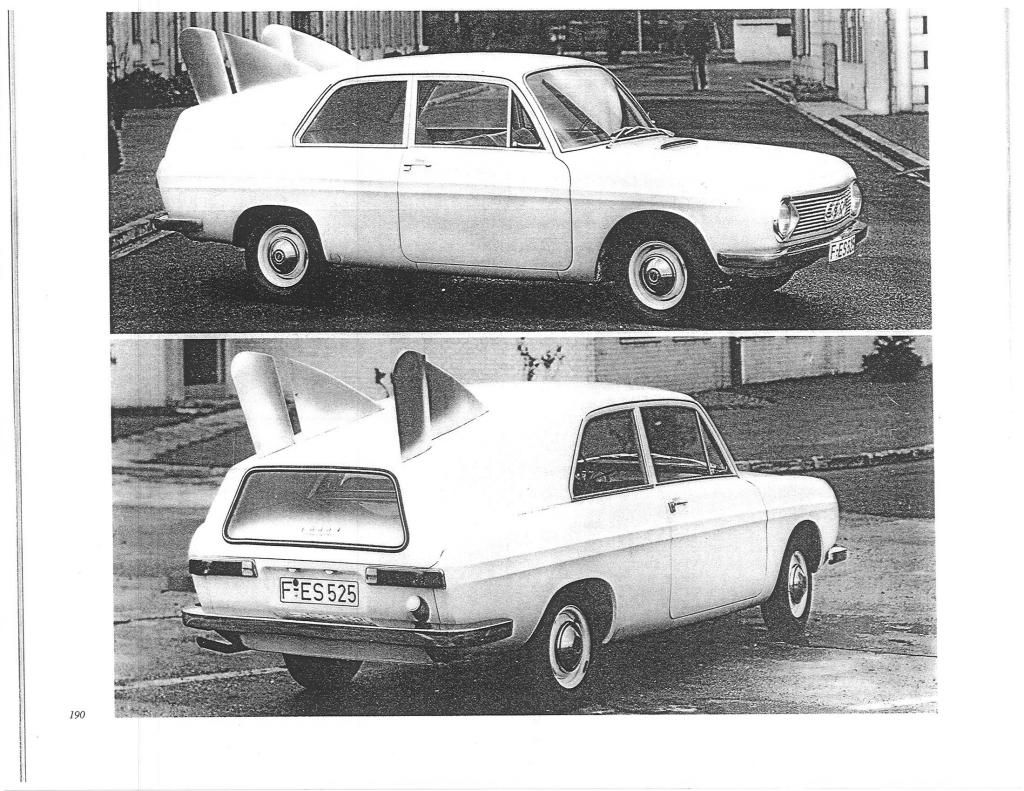With some of the preliminary images behind us now,it's time to get into the tasty stuff.
This thread will cover the 'K-form' which is commonly referred to as the "Kamm-back",which is a misnomer due to the fact that it was invented by Baron Reinhard von Koenig-Fachsenfeld.
Fachsenfeld's patents were of such great importance to the Third Reich that the Reich's transportation ministry arranged a way to marry his patents to Kamm's FKFS in exchange for laboratory access,allowing this work to gestate under Kamm's educational credentials,of which Fachsenfeld had none.
--------------------------------------------------------------------------
The following images depict the physical evolution of the K-form as it morphs from a streamline body of revolution,to a half-body,then given 'practical' anatomical, human factors,and geometrical considerations to produce a viable automobile which can navigate the streets and highways of the real world.All images are adapted from Fachsenfeld's book,Aerodynamik des Kraftfahrzeugs (The Aerodynamics of Road Vehicles),self-published in 1951

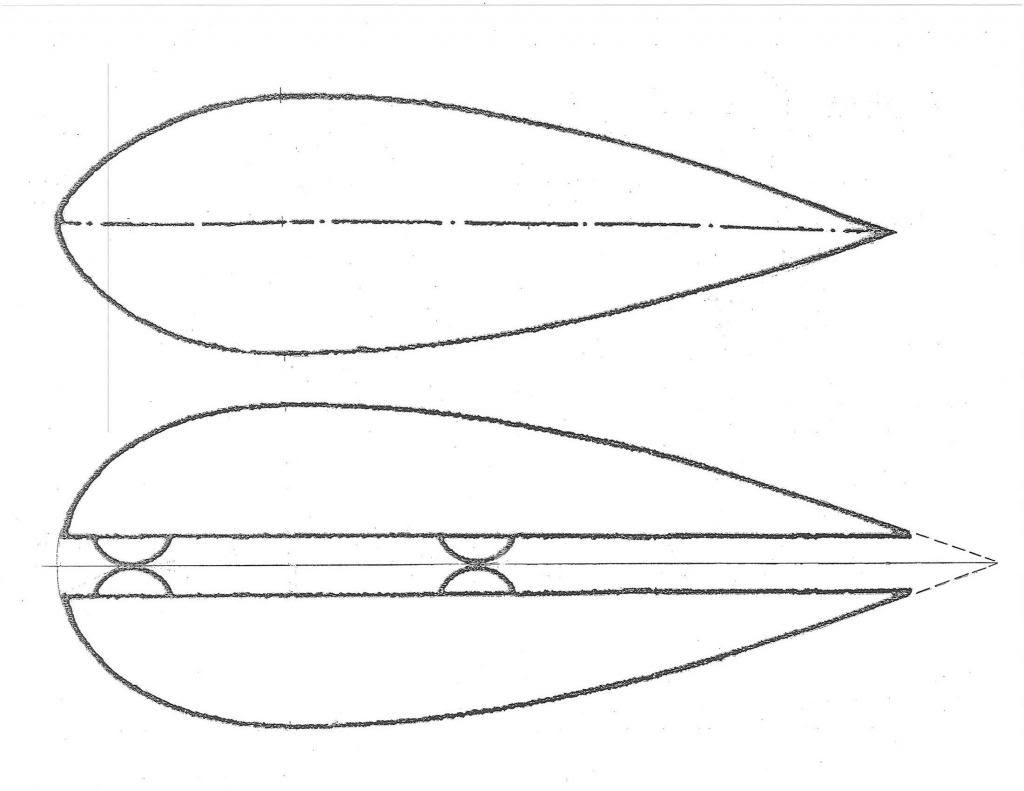
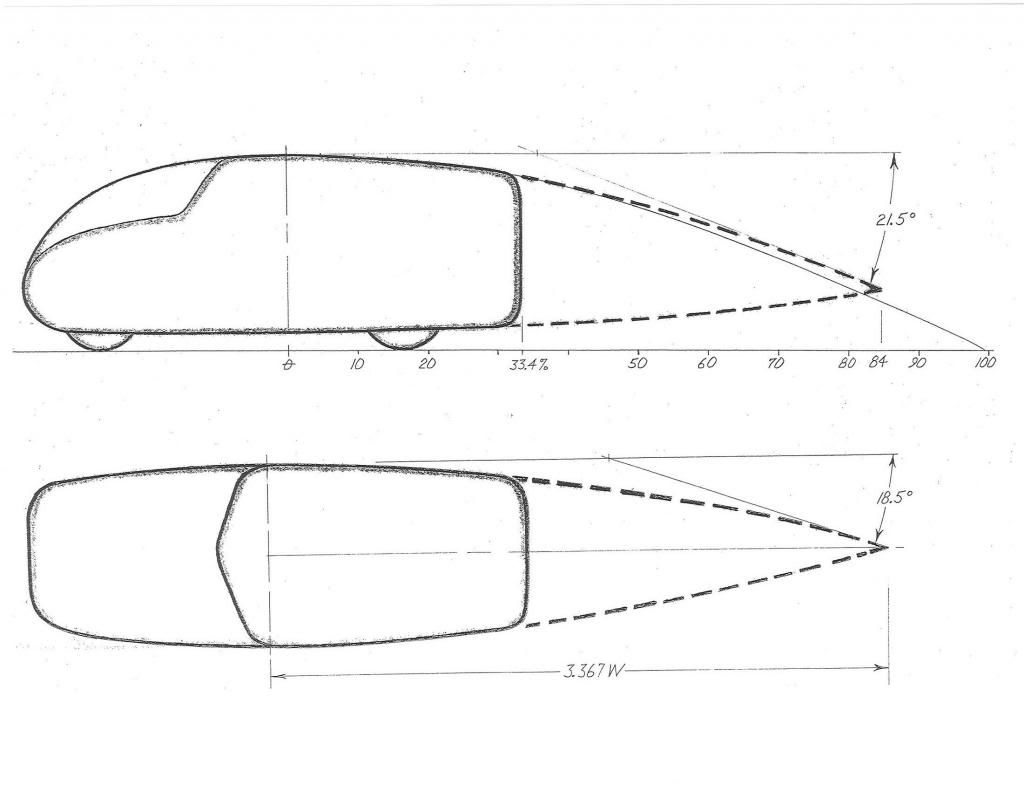
------------------------------------------------------------------------
In the top table you can see the large wake of Pseudo-Jaray aft-bodies(examples:VW Beetle,Chrysler Airflow,Kaiser Henry J,Porsche 911,etc.)which have too steep an incline to support attached flow depicted in the 3rd and 6th images from the top.By 'relaxing' the roof curvature,up to the K-form 'template',the flow re-attaches,the wake is reduced,along with overall drag.
In the bottom two images you see Fachsenfeld's 'extensible' boat tail concept,as Hucho describes it,which Hucho thought we might consider for contemporary streamlining.The tail would be inflated only for out of town highway driving.It's added length gives the added 'elongation' which Hucho insists for really low drag,and reaches into the realm of the 'phantom' tail,in which the deflected,recombining streamlines and boundary layer half-disk create an impenetrable 'surface',with the streamlines following over it as if it were a solid structure.(Dr.Alberto Morelli observed this with his CNR 'banana' car at Pininfarina's wind tunnel in 1976).
-------------------------------------------------------------------------
The second table illustrates the 'Mirror-Image' ground reflection concept invented by Paul Jaray in 1922 which implicates a vehicles 'effective fineness ratio',one of the most important criteria in road vehicle aerodynamics.
--------------------------------------------------------------------------
The third table is the plan-view of the K-form as Fachsenfeld tested it at Stuttgart in the mid-1930s.He plays safe,with no more than 21.5-degrees tangent down-slope angle in side elevation,and 18.5-degrees in plan-view.
This plan-view 'template' favors the 2-D ideal symmetrical wing section contour than Mair's boat tail.Many of the lowest drag cars measured utilize this conservative plan-view contour.
-------------------------------------------------------------------------
As depicted,with optimized leading edge radii,smooth undersides,no cooling systems,side body camber,tumblehome,full tail,and practical windshield,and wheels,this form will produce Cd 0.12 .
-----------------------------------------------------------------------
I'll continue to add tables as time permits.
Here is the FKFS 'Jaray/pseudo-Jaray wind tunnel model schematic which was tested with the 5-different lenghs
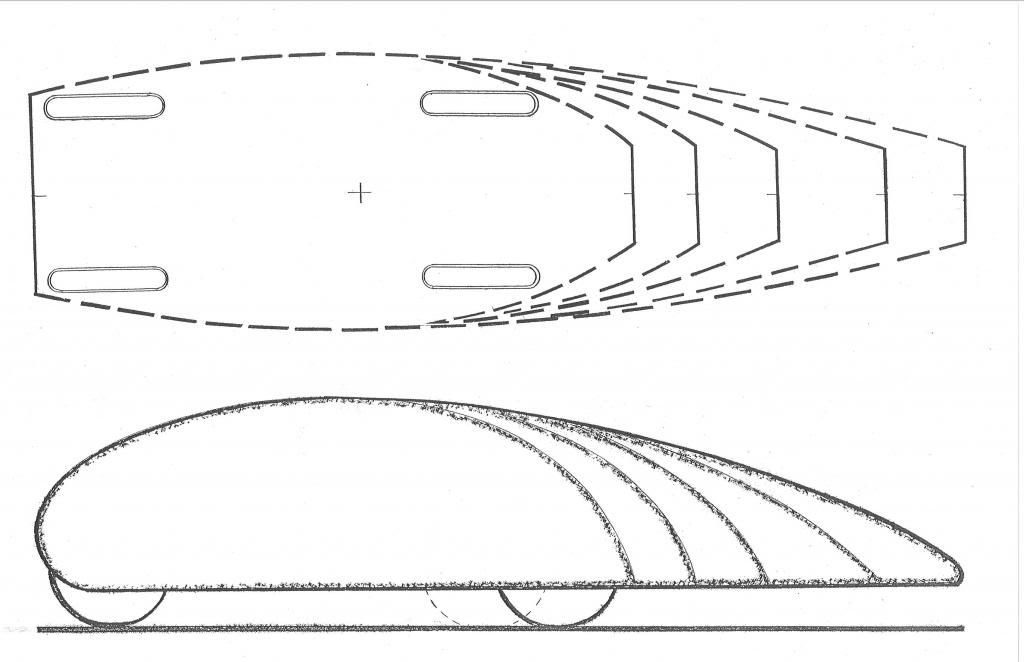
Here is the K-form (Koenig-Kamm) FKFS wind tunnel model schematic
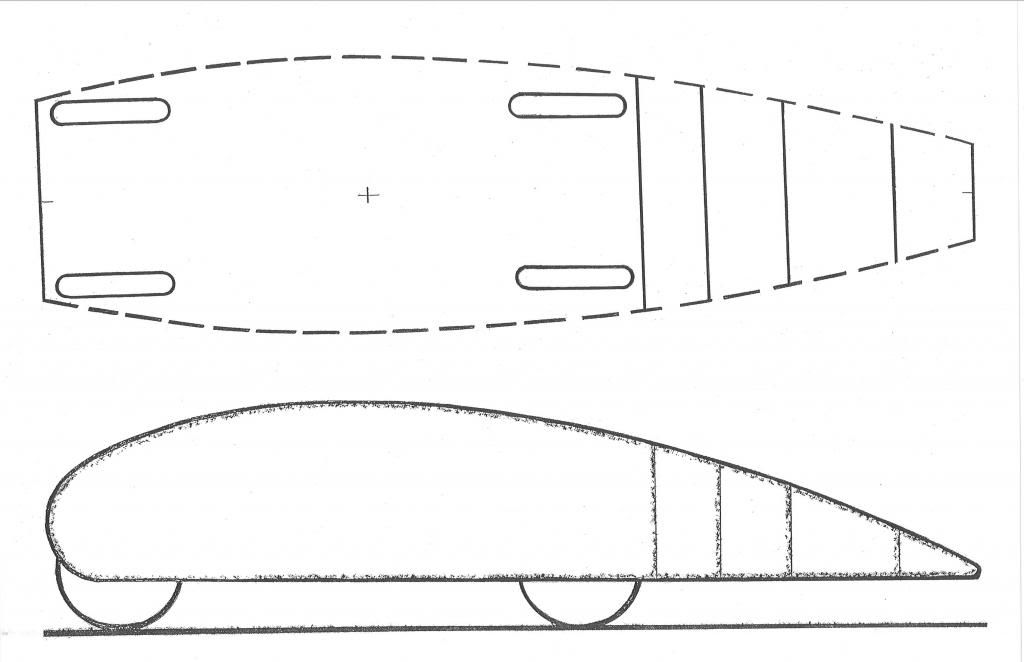
Typically,the K-form was superior in drag compared to the J-form until near full-boat-tail lengths at which point the models were identical in architecture.
NOTE: the models have:
*zero leading edge radii
*zero longitudinal edge radii
*zero tumblehome
*zero front/rear elevation vertical body camber
*bellys are smooth
*there are no wheel houses
*no cooling or ventilation passages
*no 'features'
-------------------------------------------------------------------------
DRAG of J-Form model:
the Cds for this model,from shortest,to longest length are:
0.33
0.28
0.26
0.22
0.21
--------------------------------------------------------------------------
DRAG of K-Form model
0.25
0.24
0.24
0.22
0.21
--------------------------------------------------------------------------
The pseudo-Jaray contours come at a high price.
--------------------------------------------------------------------------
Also,the boat tailing suffers do to the compromised leading edges etc.,as Walter Lay discovered in 1933.If the source sucks,so goes the sink!
0.205
-------------------------------------------------------------------------
Here is Kamm's lowest drag,and personal car,rated at Cd 0.23,with Diesel engine and overdrive unit

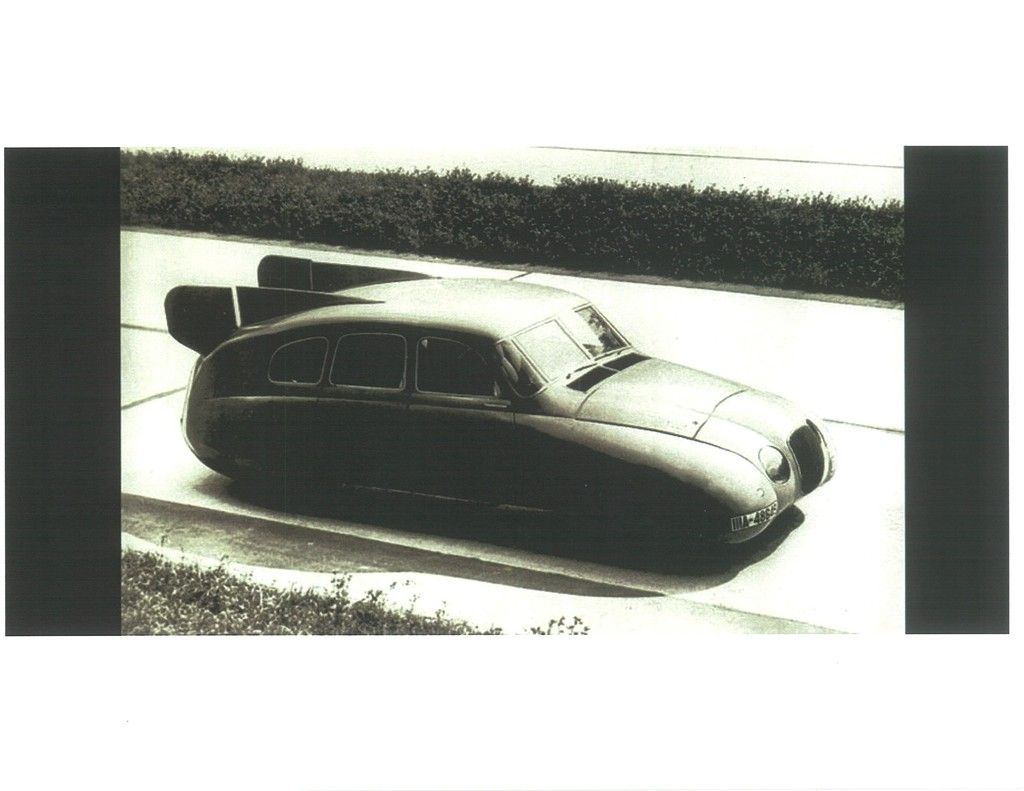
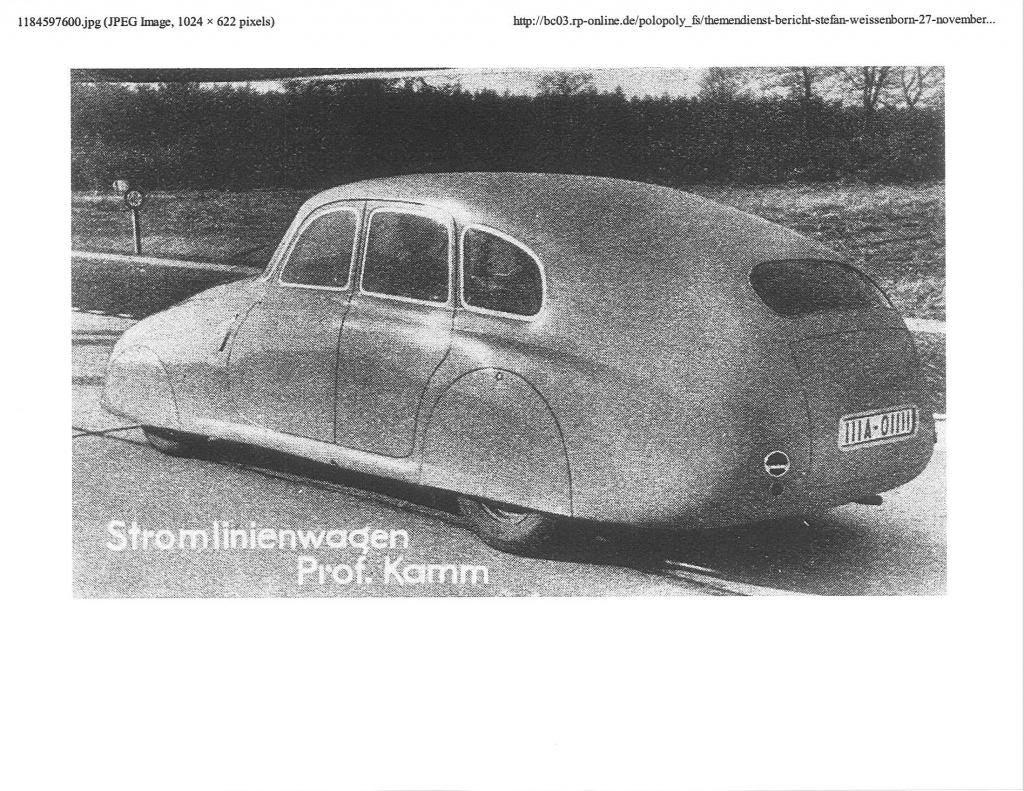
------------------------------------------------------------------------
Here is the only surviving K-car,from Landenburg Castle,measured with compromised belly pan at Volkswagen wind tunnel,@ Cd 0.37.
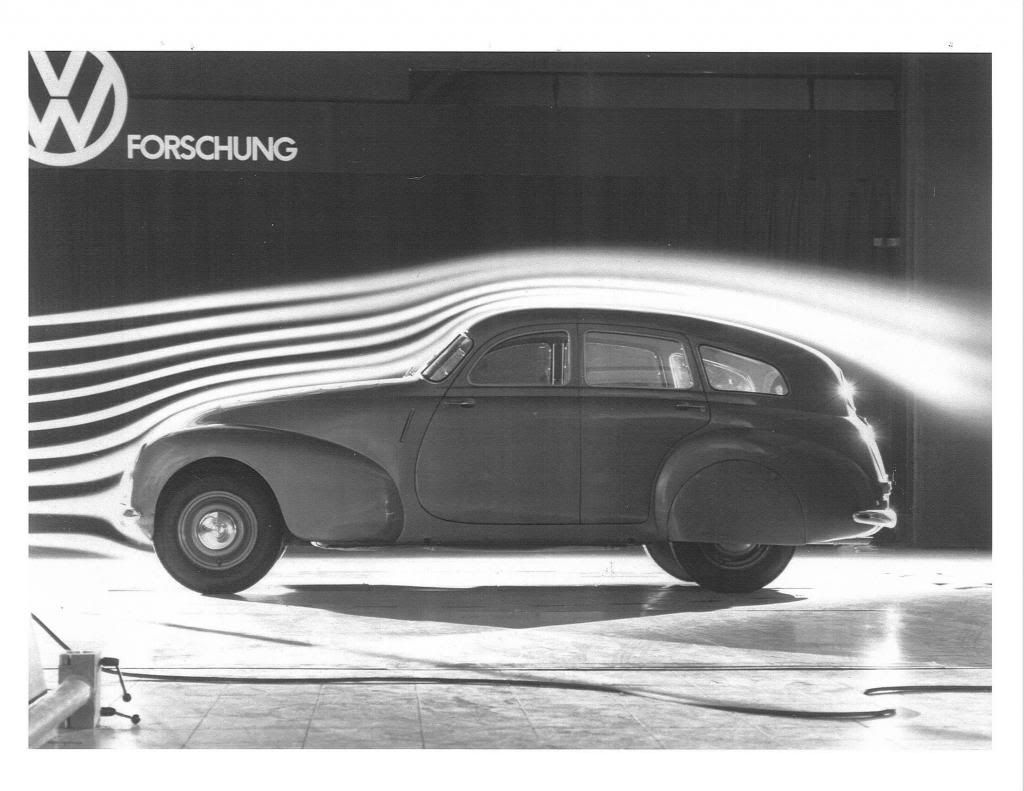
-------------------------------------------------------------------------
Here is a wind tunnel tuft study of one of the K-form models clearly demonstrating attached longitudinal vortices, where the higher pressure side flow is migrating up into and shearing the lower pressure air on top.These 'true' fastbacks are the most sensitive of all body types to upper edge radii and tumblehome effects.On a dusty,leaf-covered,or wet road,you'd be able to clearly see these tornadoes trailing behind the 'car.'
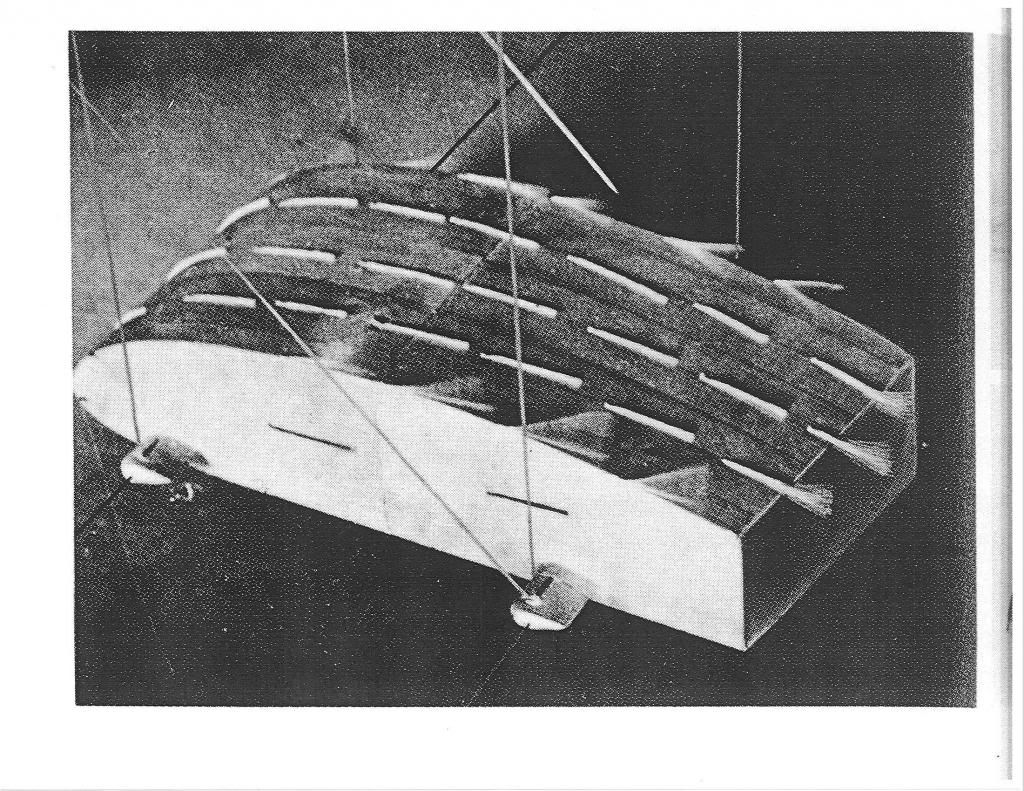
Here is an FKFS drag comparison for 'Jaray' sections of varying L/Thickness ratios from Fachsenfeld's book.
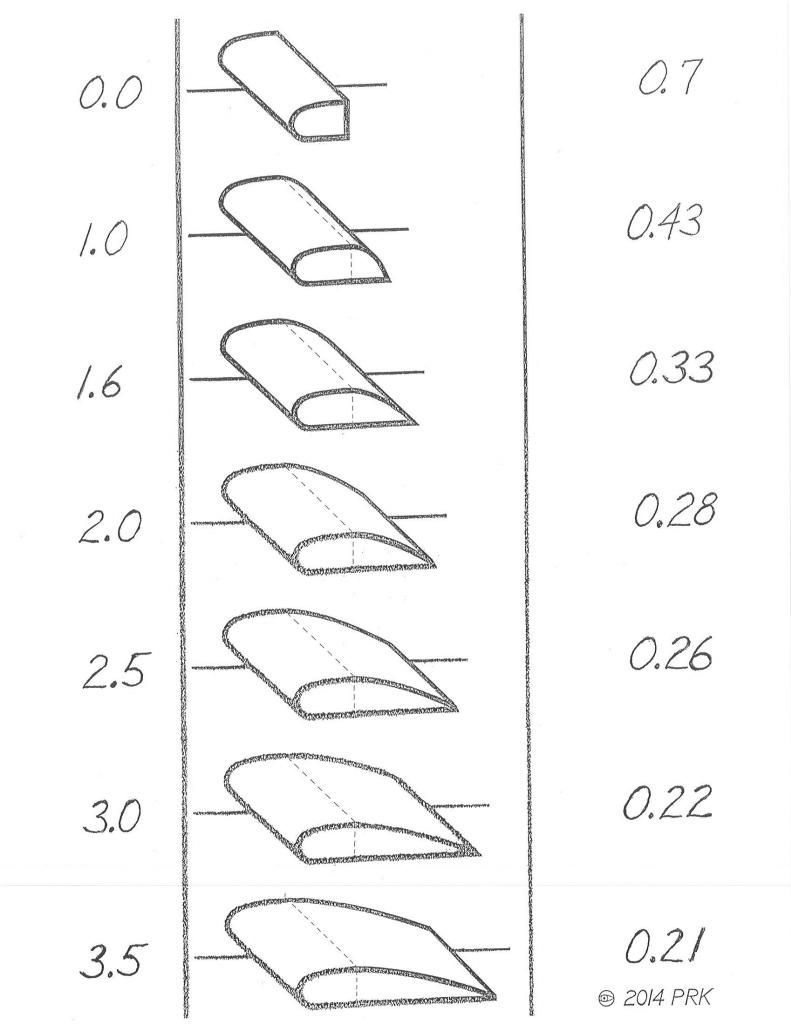
Here is a FKFS table,also from Fachsenfeld's book,illustrating a 16.6% difference in drag depending upon whether or not tumblehome,and edge radii are present.You can see the schematic representation of attached longitudinal vortices,spawned by the hard edges.
When BamZipPow can soften the back of his T-100/1-wheel boat-tailed trailer,he ought to realize an additional mpg increase.The cherry on top of the whipped cream!
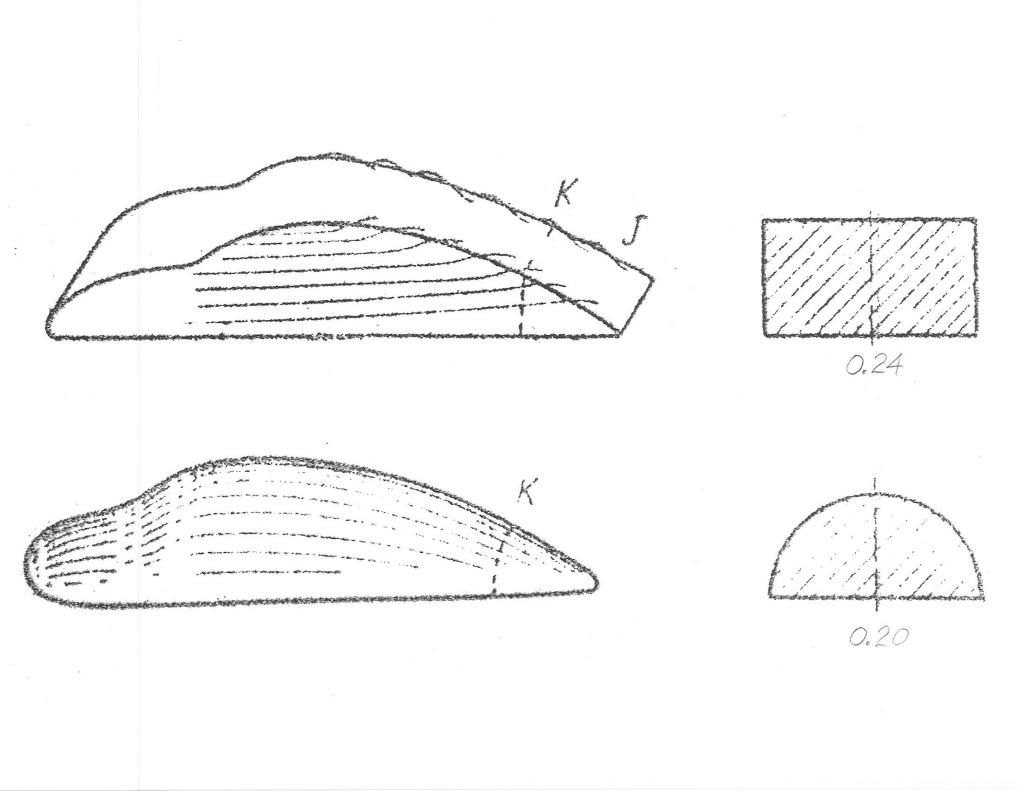
Here is Professor Wunibald I.Kamm's last K-Car,a modified DKW (AUDI),front wheel drive notchback sedan,built for the Battelle Institute.If you look through the rear windshield you can see the original notchback architecture hidden underneath the Kamm extension.Fachsenfeld's patented split-fin stabilizers are used,as with Kamm's personal WW-II era car.This photograph is from AUTOMOBILE QUARTERLY,in an article on Kamm by Karl Ludvigsen.
